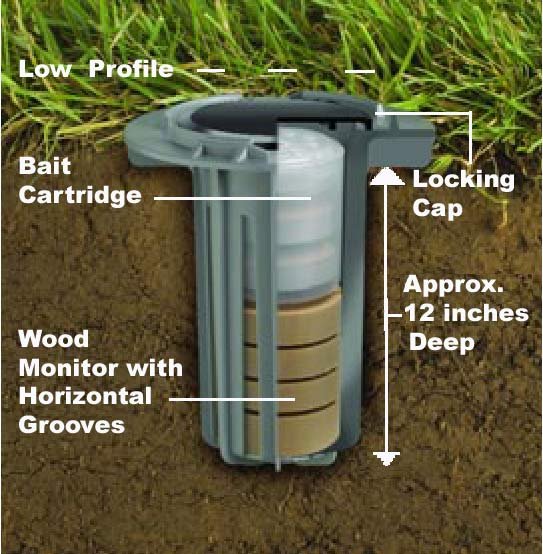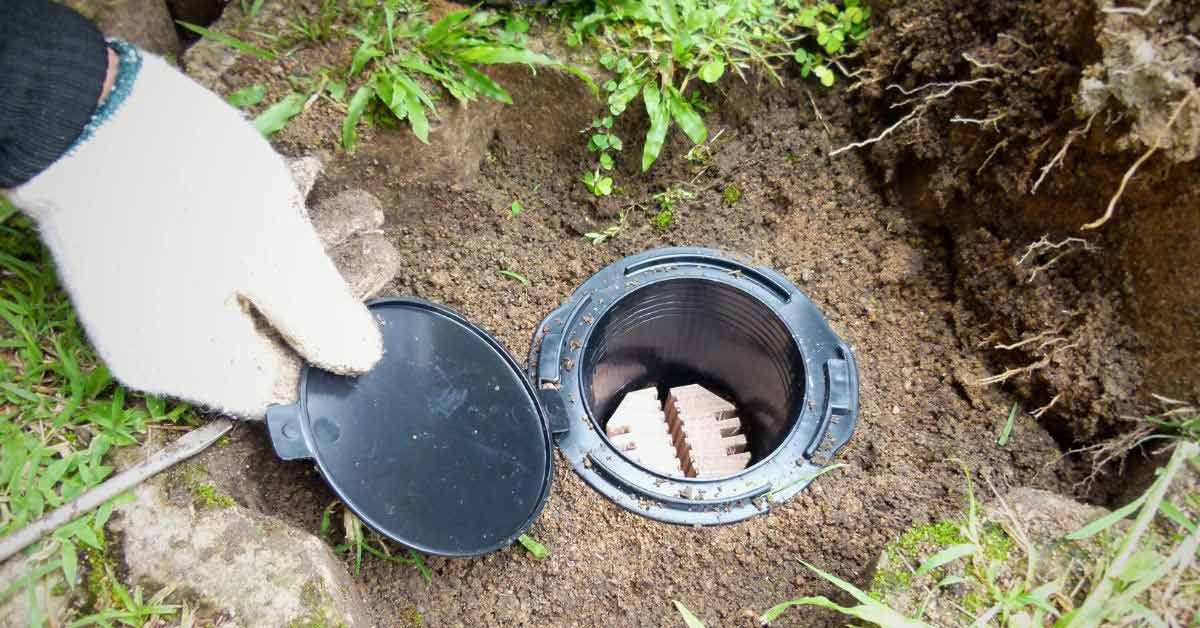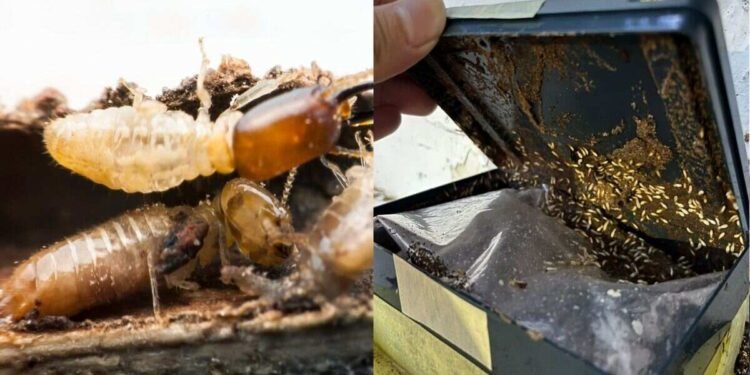Programs for termite prevention and control mostly rely on baits. Using a liquid termiticide sprayed on the soil is the most popular way to treat termites in homes. But in certain circumstances, a baiting system could be the better option, the sole substitute for a liquid treatment, or even a way to enhance one. As an illustration:
A liquid remedy can be too challenging:
- Chemical spills into ponds, creeks, or other bodies of water are possible due to the foundation drain that is either outside the home or beneath a slab.
- Drilling may be necessary to reach the heating and air conditioning ducts beneath or inside a slab floor in order to treat the underlying soil.
- Drilling through other masonry, such as a finished basement wall, or extensively drilling a slab covered in wood, tile, or carpeting might be necessary for a good treatment.
In certain situations, such as when there is a well or cistern beneath or too close to the home, a normal soil treatment may be prohibited by federal, state, and/or local laws.
For whatever reason, you would rather use an alternative to soil treatments.

Which Termite Control Method Is the Best?
Because liquid treatments and bait treatments are applied (and thus operate) extremely differently from one other, it is difficult to compare the two approaches in terms of which works “better”. Liquid termiticides put to the soil serve as chemical barriers to both kill termites that are actively infesting the building and prevent new termites from entering. Termites come into contact with these treated obstacles as they go about their daily business of “food hunting”—foraging subterranean.
Certain termiticides, such those that include chlorantraniliprole (Altriset®), imidacloprid (Premise®), or fipronil (Termidor®), kill termites more slowly when they come into contact with the treated soil. According to studies, some of these non-repellent compounds may be transferred by the “contaminated” termites to other members of their colony, increasing the termiticide’s total effect.
Before the bait is introduced, some termite bait station employs wood strips or cartridges filled with compressed cellulose materials to monitor termite activity. Some termite baits just employ compressed cellulose material that contains the poison instead than using monitors.
The bait stations used in all of the current termite baiting systems are placed in the ground around your house, no more than 20 feet apart, and between two and four feet away from the foundation. When places have tree stumps or other possibly infected objects nearby, they could be positioned closer.

“Traps” is how some people describe the bait stations. Termites are not trapped within the stations. Termite baits operate only if the worker termites discover, eat, and return the bait to the colony where it is distributed among the other members of the colony, just like ant baits do. Understanding that present termite bait and baiting techniques do not “attract” termites is crucial.
During their regular foraging operations, termite workers discover the stations and their contents in the same way that they might discover any other subterranean food source, such the roots of tree stumps or buried (and untreated) wood.
The more termites that think the “food” in the station is edible, the more of them will come to feed. It is impossible to forecast when termites will discover and begin feeding in a bait station. Therefore, installing the stations all over the building and focusing on known or suspected termite activity spots are crucial components of the baiting approach.
Because of this, it’s crucial to perform a comprehensive check of the home and surrounding land before the stations are put. Weather can also have a negative impact on termite foraging. For instance, extremely low wintertime temperatures may lower termite activity in the soil.
Termites may relocate deeper into the soil or remain in nearby, wetter soils (such as in mulched or irrigated regions) if the soil is too dry during dry spells. They could thus be less inclined to visit bait stations in the drier regions.

A Long-Term Method for Termite Control Is Baiting
Termite baits don’t work instantly like most conventional pesticides do. These pesticides are slow acting insect growth regulators (IGRs) by design, and they are employed in baiting systems. This makes it possible for the worker termites to transmit the bait to other colony members who choose not to go out and get their own food.
This comprises the worker termites who tend to the nest and produce new progeny, as well as the reproductives (the king and queen) and military termites. IGRs only affect juvenile termites that are still growing since they prevent the insects from moulting, in contrast to pesticides that target the nervous system of the insect. Adult workers, soldiers, and the queen are not impacted by the IGRs.
However, the majority of the colony consists of young termites, such as nymphs and larvae, who are susceptible. Because of this, it could take many months before the colony as a whole is significantly diminished or perhaps eradicated. There are fewer termites left to gather food and feed the colony as the workers perish. The colony eventually perishes and the king and queen, together with the warriors, starve to death.
The rate at which termite activity is eradicated will also depend on the season in which the bait is placed. For instance, eating on the bait may slow down when temperatures drop if the bait system is placed in the autumn to combat an active infestation (although the temperature of the soil may not drop as rapidly).
Thus, you may still witness activity in the spring, such as swarming (winged) termites. Even a liquid treatment performed really late in the year (or during the winter) might result in this similar circumstance.
As long as you have your agreement with the pest control firm, the baiting program is ongoing throughout the year. A successful termite baiting program depends on careful station maintenance and monitoring. Make sure you are aware of the company’s monitoring and inspection schedule and that you are informed on a regular basis following each inspection—which might take place once a quarter or once a year.












